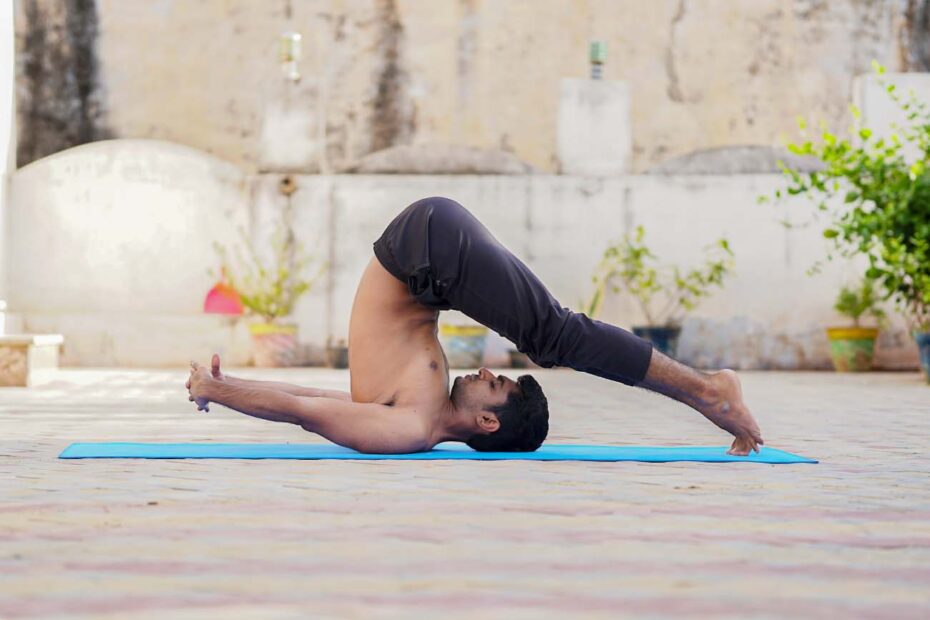What is anemia?
A lack of haemoglobin or red blood cells (RBCs) in the blood is a medical disease known as anemia. Red blood cells include a protein called haemoglobin, which is responsible for transporting oxygen from the heart to other body areas. A variety of symptoms, including exhaustion, weakness, shortness of breath, and pale skin, are caused by anaemia, which results in reduced oxygen levels to tissues and organs.
Through regular practice of yoga asanas, meditation and proper diet changes, this condition can be corrected. Below are some yoga for anemia that can benefit individuals with anemia. Practicing these poses can help alleviate symptoms and improve overall health.
Table of Contents
Yoga Poses For Anemia
1. Headstand (Shirshasana)
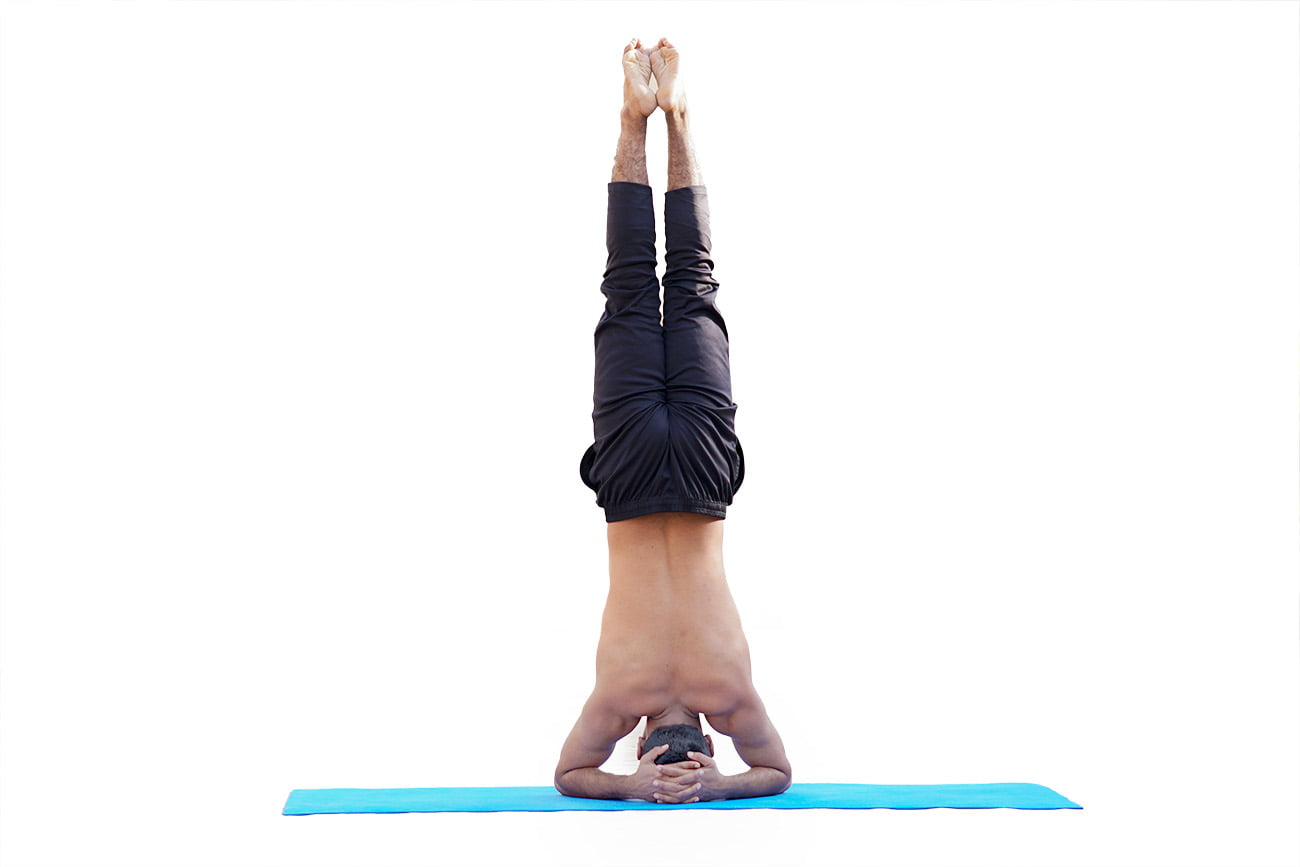
# Steps To Follow
- To begin with headstand, it is important to find a clear and soft surface that provides enough space for you to move around without bumping into anything or anyone.
- Once you have found your ideal spot, come onto your hands and knees and place your forearms on the ground, ensuring that your elbows are shoulder-width apart. Interlace your fingers and create a triangle shape with your forearms.
- place the top of your head on the ground, allowing the back of your head to rest in your interlaced fingers.
- Lift your hips up and walk your feet in as close to your body as possible.
- Slowly lift one leg up, followed by the other, until your legs are straight up in the air (If you need support, feel free to use the wall).
- Engage your core muscles to keep your legs lifted up and maintain a relaxed gaze focused on the ground.
- Hold the pose for as long as you feel comfortable, and then slowly lower your legs back down to the ground.
2. Shoulder Stand (Sarvangasana)

# Steps To Follow
- Lie flat in supine position with your arms resting alongside your body and your palms facing downwards.
- Inhale deeply and use your abdominal muscles to lift your legs towards the ceiling. Ensure that your legs are straight and your toes are pointing upwards.
- Place your hands on your lower back with your fingers pointing towards your hips and your elbows resting on the ground.
- Inhale again and use your arms and core to elevate your hips and legs higher. As you lift, walk your hands up your back towards your shoulder blades.
- Exhale and straighten your legs towards the ceiling, creating a straight line from your toes to your shoulders.
- Engage your legs, core, and arms to maintain the pose, and take deep breaths.
- To exit the pose, slowly lower your legs and hips back down to the ground, using your hands to support your back.
- Release your hands from your back and rest in Savasana (Corpse pose) for a few breaths.
3. Plow Pose (Halasana)
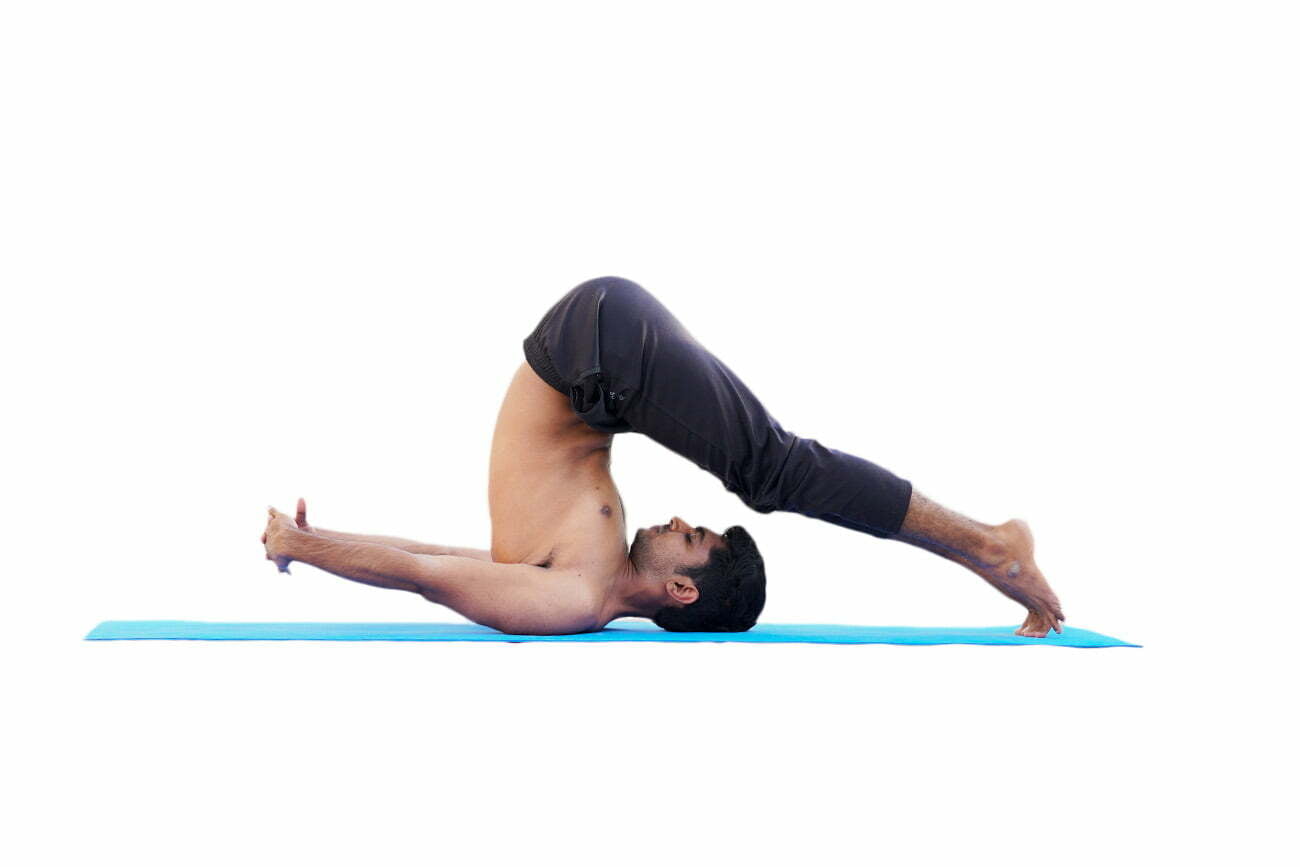
# Steps To Follow
- Lie down flat on your back. Keep your legs close together and your chin tucked in.
- Breathe deeply. Inhale. Lift your legs upwards till your feet point directly up – that is, till your legs are perpendicular to your torso.
- Tuck your hands underneath yourself with your palms facing up. With your hands under your buttocks, prepare to raise your torso.
- Lift your torso gradually till you are resting on your shoulders.
- Your arms must now be bent at the elbow. Bring your hands to your back to support yourself. Your legs should be over your head.
- Slowly straighten your back.
- Keep your knees firm but relax your calf muscles now. Maintain the posture. You are now in the Sarvangasana posture.
- From here, lower your legs forward so that your feet touch the floor over your head. Now, bring your arms down flat on the floor. Breathe evenly and maintain this posture.
4. Sitting Forward Fold (Paschimottanasana)
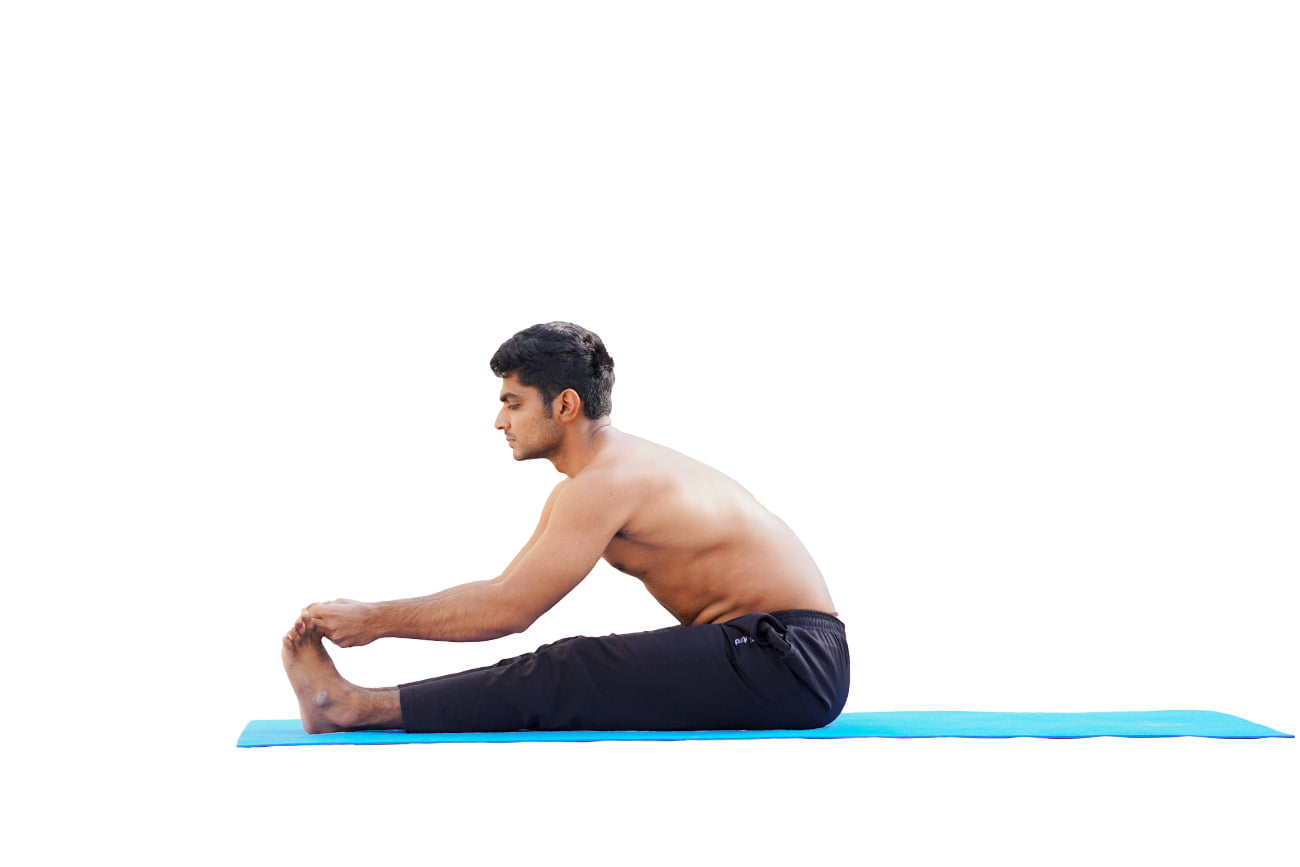
# Steps To Follow
- Sit in a seated position with your legs straight out in front of you and your spine tall and straight.
- Take a deep breath in and reach straight up overhead to lengthen your spine.
- As you exhale, grab your big toes with your middle and index fingers and begin to bring your body over the top of your legs. Lower and hold until you feel a gentle stretch in your hamstrings and low back.
- Continue to lengthen your spine while breathing deeply.
5. Standing Forward Bend (Uttanasana)

# Steps To Follow
- Exhale forward from Mountain pose, hingeing at the hips. Bend the knees so that the palms are flat on the floor and the head is pressed against the knees.
- Stretch the spine in opposite directions by pulling the head down and in and pressing the hips up. Straighten the legs to increase the stretch in the backs of the legs.
- Inhale and hold for 4 breaths, actively pressing the belly into the thighs.
- To release, bend the knees while keeping your back straight, inhale your arms out to the sides, and exhale your arms and torso back into Mountain pose.
6. Ujjayi Pranayama
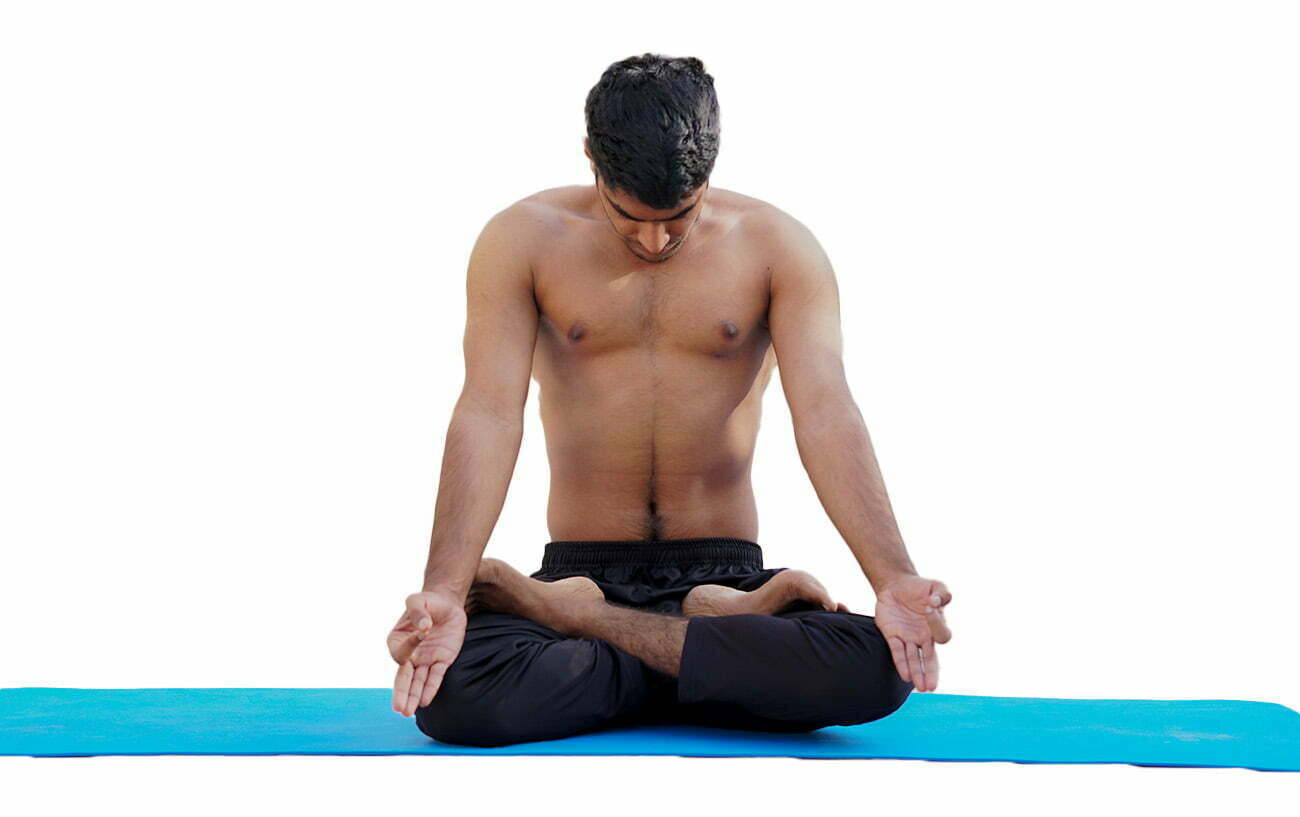
# Steps To Follow
- As you inhale and exhale, Keep your mouth closed.
- Constrict your throat until your breathing makes a rushing noise, similar to snoring.
- Use your diaphragm to control your breathing.
- Keep your inhalations and exhalations at the same length.
- It may feel like you’re not getting enough air at first, but with practice, the technique should become easier.
7. Uddiyana Bandha (Abdominal Contraction)
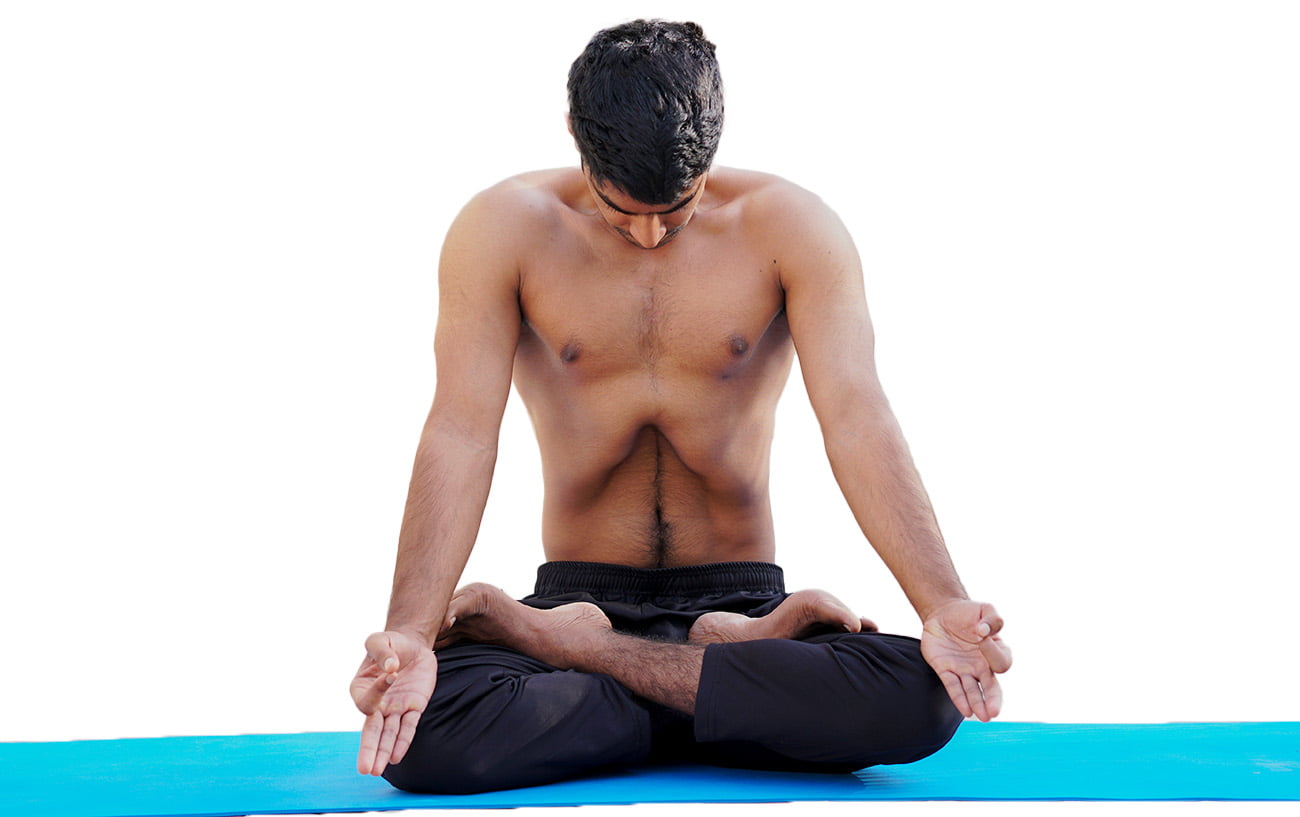
# Steps To Follow
- Sit in Padmasana or Siddhasna. Get comfortable with the asana.
- Place your hands on the lower thighs, just above the kneecap.
- Take some deep breaths.
- Exhale the breath completely, and hold it.
- Now, draw the navel part in and try to touch your spine, then lift it towards your ribcage or heart’s center, holding the breath.
- Hold it for a few seconds, according to your comfort the drop it gently.
Frequently Asked Questions (FAQs)
-
What are the symptoms of anemia?
Anemia can include fatigue, weakness, shortness of breath, pale skin, dizziness, rapid heartbeat, headache, and chest pain.
-
Can yoga cure anemia?
practicing yoga may be beneficial for individuals with anemia as a complementary therapy to improve their overall health and energy levels. Yoga can help improve overall health and well-being, but it is not a cure for anemia. Anemia is a medical condition that requires proper diagnosis and treatment by a healthcare provider.
-
Can anemia be prevented?
Anemia can often be prevented by eating a healthy diet and practicing yoga.
-
Is anemia a serious condition?
Anemia can range from mild to severe, and the severity of the condition depends on the underlying cause and the individual’s overall health.

